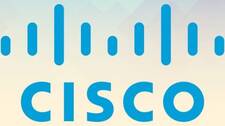Upgrade & Secure Your Future with DevOps, SRE, DevSecOps, MLOps!
We spend hours on Instagram and YouTube and waste money on coffee and fast food, but won’t spend 30 minutes a day learning skills to boost our careers.
Master in DevOps, SRE, DevSecOps & MLOps!
Learn from Guru Rajesh Kumar and double your salary in just one year.
Source:-datacenterknowledge.com
Cisco kicked off its big Cisco Live! conference in Barcelona Tuesday by rolling out a plug-and-play Kubernetes software package for its HyperFlex hyperconverged infrastructure stack and updates to Cisco management tools that help enterprise IT and application teams stay on the same page.
The new HyperFlex Application Platform is an integrated “container-as-a-service” offering that allows IT shops to easily install, manage, and maintain a Kubernetes environment on HyperFlex hardware in their data centers.
Related: Cisco Integrates Its On-Prem Kubernetes Platform With AWS
Cisco has curated all the components necessary to deploy a container environment, so IT managers don’t have to piece together open-source parts themselves, said Kaustubh Das, VP of product management for Cisco’s Computing Systems business.
Kubernetes, the open source container orchestration platform built by Google, is notoriously complicated and difficult to get up and running from scratch. With Cisco’s new solution, “IT managers can give their developers a turnkey Kubernetes-as-a-service platform,” he said.
Related: Google Cloud Takes Center Stage at Cisco Live!
Cisco has also built new visual maps into its AppDynamics application performance monitoring tool and into Intersight Workload Optimizer, its tool for managing IT and cloud infrastructure. The new maps allow IT teams to more easily monitor application and infrastructure health and performance, which in turn helps them proactively spot problems and troubleshoot.
If you buy the HyperFlex Application Platform, Intersight will also deliver and install it on your HyperFlex HCI systems.
An increasing number of enterprises want to deploy containers across hybrid and multi-cloud environments, and Cisco’s announcement in Barcelona gives it a competitive offering against the likes of Amazon Web Services, Google Cloud Platform, Microsoft Azure, Hewlett Packard Enterprise, and others, said Bob Laliberte, senior analyst at Enterprise Strategy Group.
An ESG survey last year found that 70 percent of enterprises were using or planned to use containers in a hybrid environment, Laliberte said. Another 48 percent said it was very important to have multi-cloud management tools.
“This is Cisco’s approach to it,” he said. “Cisco’s AppDynamics is widely deployed by organizations going to the cloud. It’s smart for Cisco to tie it to on-premises infrastructure and other solutions to help automate and manage a Kubernetes environment.”
Cisco is faced with stiff competition in this space. Google Cloud Platform, for example, last April introduced Anthos, an open platform that lets companies run apps anywhere without code modifications, either on existing on-premises hardware or in the public cloud. Anthos is available on GCP with GKE, Google’s managed Kubernetes services, and on premises with GKE On-Prem.
In November, HPE introduced HPE Container Platform, a Kubernetes-based container platform for apps running on bare-metal or virtualized infrastructure, public cloud providers, and in edge-computing scenarios.
AWS in December announced general availability of Outposts, fully managed AWS-designed hardware that lets customers run AWS compute and storage services on premises.
Microsoft Azure Stack, hardware sold by Microsoft’s partners including Cisco, Dell EMC, and HPE, enables an on-premises version of the public Azure cloud.
For the first time, AppDynamics and Cisco Intersight Workload Optimizer will exchange and correlate the same data, which eliminates silos and allows application and IT infrastructure teams to collaborate and optimize performance, Das, the Cisco product exec, said.
“Before, the two teams often didn’t look at the same data, and if something went wrong, there’s a lot of finger-pointing,” he said. “Now, they have a common data set and common vocabulary, so when an app team sees an app running slow, the infrastructure team can see it too, and they can talk and take corrective action.”
For example, AppDynamics’ visual map, called the “Experience Journey Map,” can show the journey consumers take on the front end of a hotel reservation site, from search suggestions to individual hotel descriptions and user profiles.
AppDynamics stitches together the front end of the application with the backend IT infrastructure. In doing so, it provides details on user experience, application performance, and business performance and gives application teams color-coded alerts to describe problems, such as slow performance on a specific part of the app, said Whitney Satin, Cisco’s AppDynamics product marketing director.
The app teams can then drill down to find the cause, such as a virtual machine running out of memory, network congestion, or a failing server.
The Experience Journey Map “enables teams to prioritize what the critical user journeys are. We overlay the performance data on that, so they can hone in on critical user journeys that are performing below the baselines and (quickly) troubleshoot and ensure a consistent experience on the front end,” Satin said.
Similarly, Cisco Intersight Workload Optimizer provides a visualization of an enterprise’s in-house data centers and cloud resources. The new version of the cloud-based tool introduces new workload and cost optimization capabilities, Das said.
For example, it can help eliminate overprovisioning of resources or suggest that users move an application from a server running out of memory to another server to improve performance.
HyperFlex Application Platform and the new features in AppDynamics and Cisco Intersight Workload Optimizer will be available during the 2020 second quarter, Cisco said.

 Starting: 1st of Every Month
Starting: 1st of Every Month  +91 8409492687 |
+91 8409492687 |  Contact@DevOpsSchool.com
Contact@DevOpsSchool.com